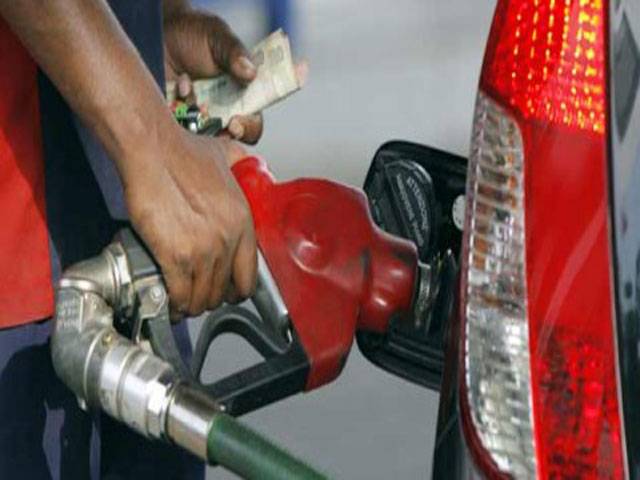ISLAMABAD - PML-N government is likely to make yet another big increase in the oil and electricity prices from October 1, reliable sources said on Friday. A hike of up to Rs5.57 per litre in POL price and up to 90 percent increase in power tariff for domestic consumers is expected, according to government sources.
This increase in power tariff is in line with the government assurance to the IMF that subsidy in power sector would be gradually withdrawn. Under the same plan, the government in August had approved up to 116 percent hike in the power tariff for commercial and industrial consumers. This increase in prices of the essential utilities ahead of Eidul Azha is bound to be much painful for the already heavily burdened people. Salaried class would find it even more difficult to manage their home budget.
Official sources said that as per Ogra’s summary sent to ministry of petroleum for final approval, petrol would go costlier by Rs5.45 per litre, kerosene by Rs2.14, diesel (HSD) by Rs2.63, light diesel by Rs2.83 and high octane blended component (HOBC) by Rs5.57. If the OMC’s recommendation is approved, the new per litre price of petrol would be Rs114.58, HSD RS114.89, LDO Rs101.24, Kerosene oil Rs108.13 and HOBC Rs143.90.
The regulator, however, as a ritual, recommended for maintaining the prices at the current level by adjusting the crude oil price increase in international market by decreasing the rate of already imposed Petroleum Levy and by increasing the subsidy. Some sources said that given the expected intense public reaction over the issue the government may decide to pass on diminished impact of crude oil price hike to the masses. Parliamentarians have repeatedly expressed their resentment over this seemingly mindless and cruel trend of putting more and more burden on the poor segment of the society. But their criticism in the upper and lower houses of parliament has been ignored by the of new government which says it has inherited a dilapidated economy and harsh monetary policies are essential to save the country from defaulting.
The PML-N government during its election campaign had promised not to seek IMF loan but now it says the loan is a necessary evil. Different opposition parties and religious groups including PPP, PTI, ANP, MQM, JI had also rejected the recent price hikes for POL, gas and power, declaring them ‘anti-people’. There have also been public protest demonstrations in different areas of the country over the issue. The prices issue has also been challenged in the Lahore High Court. But the government has so far not accepted the demands of the parliamentarians and people to withdraw the prices increase in oil and power sectors. Another increase in oil prices, particularly at a time when the economy is struggling for revival, would have a negative impact on economy as well, as it would stifle economic growth. Even a slight increase in the POL product would multiply the cost of doing business, affecting the productivity of economy and competitiveness of exports and depriving the country of the precious foreign exchange earnings, a finance expert said. The step is also likely to seriously damage the popularity of the Nawaz government.
But an official warned that any decrease in the PL or General Sales Tax (GST) to absorb the increase in international oil prices would also put a negative impact on the country’s economy, forcing the government to borrow more and more from the banking system, leading to accentuation of price pressures, depreciation of rupee and possibly a rupture of present relationship with the International Monetary Fund (IMF).
Sources in water and power ministry disclosed that following the assurance of Finance Minister Ishaq Dar to the IMF in writing that power tariff for domestic consumers will be increased from October 1, 2013 under a four-phased plan so the authorities have launched a plan to gradually eliminate most of the energy subsidies.
The four-phase plan is expected to reduce the subsidies from about 1.8 percent of GDP to 0.3-0.4 percent of GDP in three years. To materialize the assurance, the PML-N government in August had approved hike in the power tariff up to 116 per cent for commercial and industrial consumers, for the consumers of Azad Jammu and Kashmir and of housing societies, which would ultimately be faced by the inflation-hit masses.
A senior official told this scribe on Friday, “This time 90 percent (Rs3to7/unit) increase in power prices for domestic consumers is on the cards, which would save above Rs140billion worth subsidy.” Water and Power Minister Khawaja Muhammad Asif, at a press conference by the end of last July, had announced that “commercial, industrial and bulk consumers will witness a hike in power tariff from August 1 while increase in the tariff of domestic consumers would be made from October 1.”
Thursday, April 18, 2024
POL, power prices genie nearly out of bottle

1:55 PM | April 18, 2024
Stefanos Tsitsipas advances in Barcelona
4:19 PM | April 18, 2024
Met Office predicts more rains across country till April 29
2:51 PM | April 18, 2024
Punjab changes school timings for summer season
1:55 PM | April 18, 2024
Enemies of Pakistan are unable to digest investment in the country: Ataullah Tarar
1:29 PM | April 18, 2024
IHC restores Bushra Bibi's appeal for shifting to Adiala Jail from Bani Gala
1:24 PM | April 18, 2024
Hepatitis Challenge
April 18, 2024
IMF Predictions
April 18, 2024
Wheat War
April 18, 2024
Rail Revival
April 17, 2024
Addressing Climate Change
April 17, 2024
Justice denied
April 18, 2024
AI dilemmas unveiled
April 18, 2024
Tax tangle
April 18, 2024
Workforce inequality
April 17, 2024
New partnerships
April 17, 2024
ePaper - Nawaiwaqt
Advertisement
Nawaiwaqt Group | Copyright © 2024





